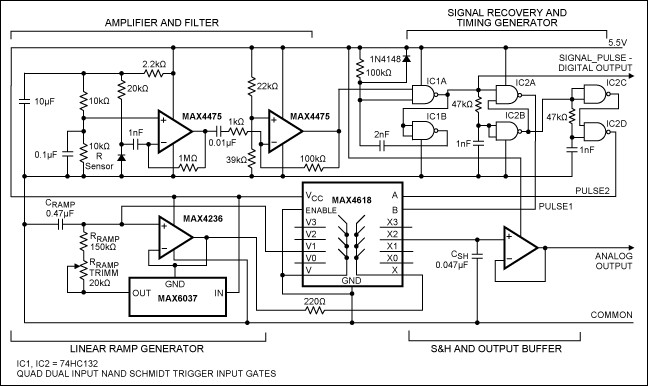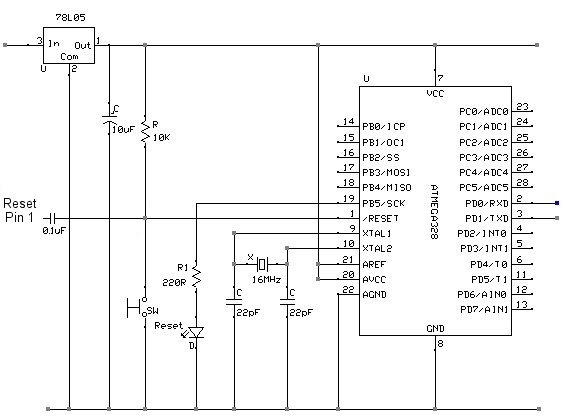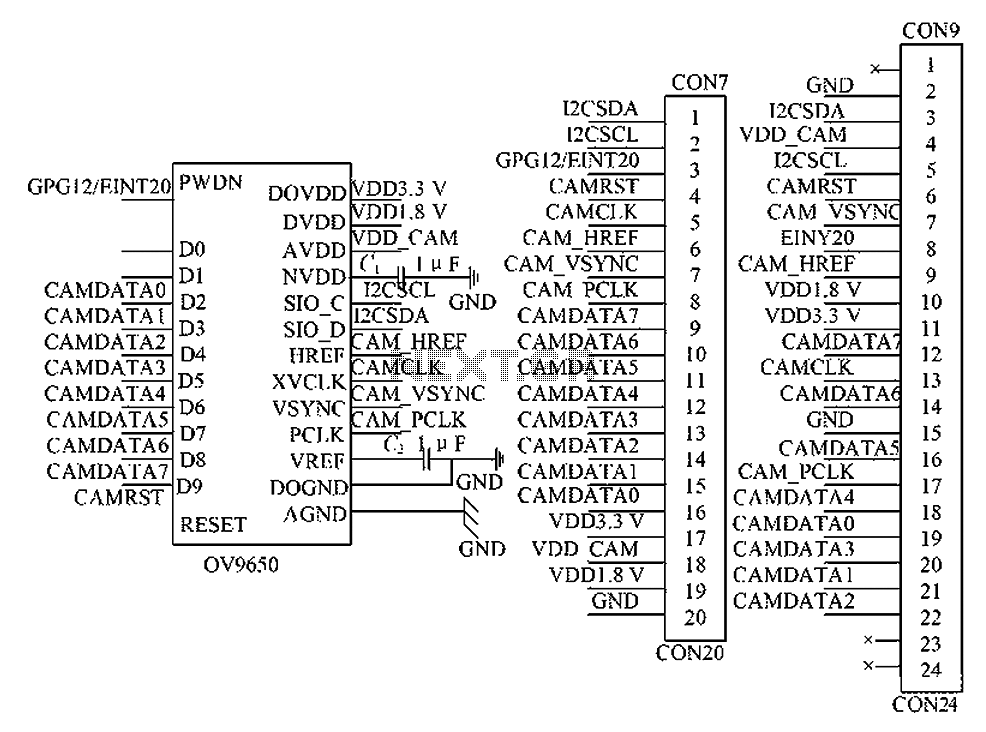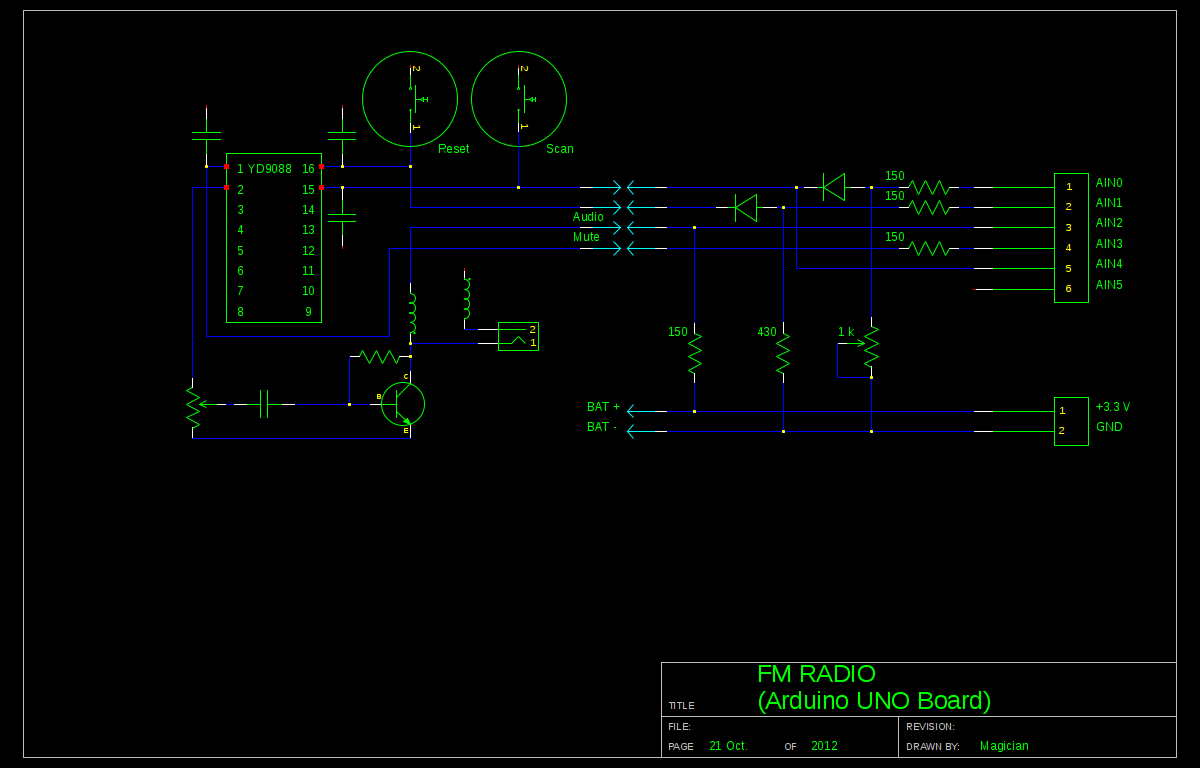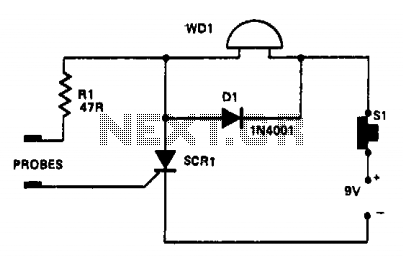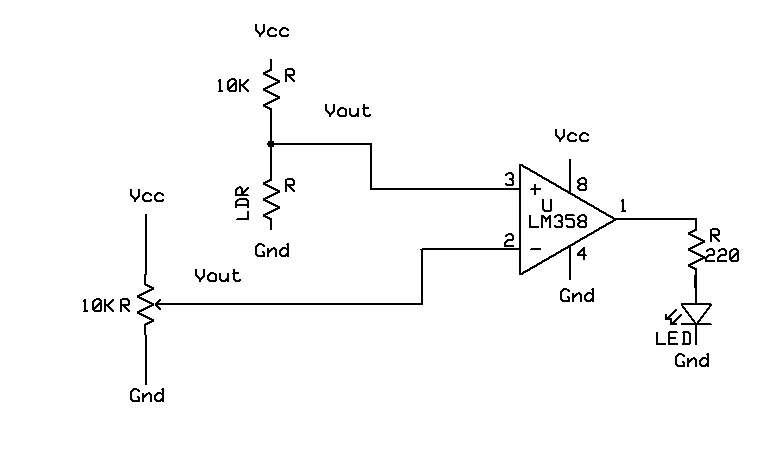
Monitoring water usage with Hall effect sensor and Arduino
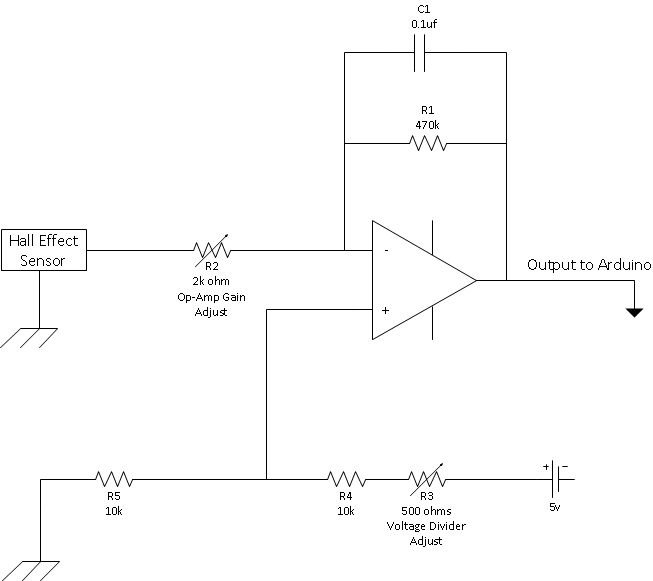
This is a straightforward schematic of an amplifier and filter. The circuit primarily features an LM124 operational amplifier configured in an inverting setup.
The schematic illustrates a basic audio amplifier and filter circuit utilizing the LM124 operational amplifier. The LM124 is a quad op-amp, which means it contains four independent, high-gain, frequency-compensated op-amps within a single package. This configuration allows for efficient use of space and resources in circuit design.
In the inverting configuration, the input signal is applied to the inverting terminal of the op-amp, while the non-inverting terminal is connected to ground. Feedback is provided from the output to the inverting input through a resistor, which sets the gain of the amplifier. The gain can be adjusted by changing the feedback resistor values. The output voltage is a negative amplified version of the input voltage, allowing for signal inversion.
Additionally, the filter aspect of the circuit can be achieved by integrating capacitors into the feedback loop or using them in conjunction with resistors to create low-pass or high-pass filters. The choice of capacitor values will determine the cutoff frequency of the filter, enabling the circuit to selectively amplify certain frequency ranges of the input signal while attenuating others.
Overall, this amplifier and filter schematic is ideal for applications requiring signal conditioning, such as audio processing or sensor signal amplification, where noise reduction and frequency filtering are essential for optimal performance.This is a fairly simple schematic of the amplifier and filter. At the core of the circuit is an LM124 op-amp running in an inverting configuration. Th.. 🔗 External reference
The schematic illustrates a basic audio amplifier and filter circuit utilizing the LM124 operational amplifier. The LM124 is a quad op-amp, which means it contains four independent, high-gain, frequency-compensated op-amps within a single package. This configuration allows for efficient use of space and resources in circuit design.
In the inverting configuration, the input signal is applied to the inverting terminal of the op-amp, while the non-inverting terminal is connected to ground. Feedback is provided from the output to the inverting input through a resistor, which sets the gain of the amplifier. The gain can be adjusted by changing the feedback resistor values. The output voltage is a negative amplified version of the input voltage, allowing for signal inversion.
Additionally, the filter aspect of the circuit can be achieved by integrating capacitors into the feedback loop or using them in conjunction with resistors to create low-pass or high-pass filters. The choice of capacitor values will determine the cutoff frequency of the filter, enabling the circuit to selectively amplify certain frequency ranges of the input signal while attenuating others.
Overall, this amplifier and filter schematic is ideal for applications requiring signal conditioning, such as audio processing or sensor signal amplification, where noise reduction and frequency filtering are essential for optimal performance.This is a fairly simple schematic of the amplifier and filter. At the core of the circuit is an LM124 op-amp running in an inverting configuration. Th.. 🔗 External reference
